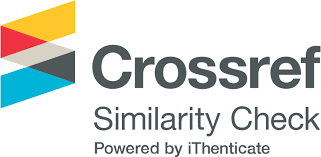ELECTRONIC CUSTOMER RELATIONSHIP MANAGEMENT (E-CRM) - OPPORTUNITIES AND CHALLENGES IN THE DIGITAL WORLD
DOI:
https://doi.org/10.59415/mjacs.v3i2.225Keywords:
Electronic relationship with customer, Internet, Consumer value, Consumer needs.Abstract
A customer-focused approach to customer service, customer relationship management (CRM) aims to create enduring bonds with customers that benefit both the selling business and the consumer. In the current competitive market, keeping existing clients and attracting new ones is really difficult task. Furthermore, as a result of advancements in technology, the nature of business transactions has evolved. Since the internet is a vital component of any organization, many view it as an opportunity to reduce customer service expenses and strengthen relationships with customers, better personalised marketing strategies, and enable mass customisation. All techniques for managing client interactions using information technology fall under the umbrella of electronic customer relationship management, or E-CRM. In the service sector today, relationship marketing is taking the place of the antiquated transactional concept.
In an effort to establish a lasting relationship with the client by learning more about their requirements and expectations, the CRM idea was applied. This paper analyzes various opportunities and challenges that electronic Customer relationship management faces in the digital world. It also highlights the role and future prospects for adoption of E-CRM.
Downloads
References
Chen, I. J., & Popovich, K. (2003). Understanding customer relationship management (CRM): People, process, and technology. Business Process Management Journal, 9(5). https://doi.org/10.1108/14637150310496758 DOI: https://doi.org/10.1108/14637150310496758
Payne, A., & Frow, P. (2005). A strategic framework for customer relationship management. Journal of Marketing, 69(4), 167–176. https://doi.org/10.1509/jmkg.2005.69.4.167 DOI: https://doi.org/10.1509/jmkg.2005.69.4.167
Price, L. L., & Arnould, E. J. (1999). Commercial friendships. Journal of Marketing, 63(October), 38–56. DOI: https://doi.org/10.1177/002224299906300405
Ryals, L. (2003). Making customers pay: Measuring and managing customer risk and returns. Journal of Strategic Marketing, 11(3), 165–175. https://doi.org/10.1080/0965254032000133476 DOI: https://doi.org/10.1080/0965254032000133476
Verhoef, P. C. (2003). Understanding the effect of efforts on customer retention. Journal of Marketing, 67(October), 30–45. https://doi.org/10.1016/j.intmar.2011.02.002 DOI: https://doi.org/10.1509/jmkg.67.4.30.18685
Anderson, V., & Kerr, C. (2002). Customer relationship management. McGraw-Hill Education.
Jain, S., & Sharma, A. (2014). Electronic customer relationship management (E-CRM): A revolutionary approach in modern business. International Journal of Research in Management, Science & Technology, 2(1), 97–101.
Kotorov, R. (2002). Customer relationship management: Emerging concepts, tools, and applications. McGraw-Hill Education.
O'Leary, D. E. (2000). Enterprise resource planning systems: Systems, life cycle, electronic commerce, and risk. Cambridge University Press. DOI: https://doi.org/10.1017/CBO9780511805936
Downloads
Published
How to Cite
Issue
Section
ARK
License
Copyright (c) 2025 Simranjeet Singh, Pawanjot Kaur

This work is licensed under a Creative Commons Attribution 4.0 International License.
License Statement
This work is licensed under a Creative Commons Attribution 4.0 International License (CC BY 4.0).
Authors who publish with mLAC Journal for Arts, Commerce and Sciences (m-JACS) retain copyright of their articles and grant the journal the right of first publication.
This license allows others to share, use, and build upon the work—commercially or non-commercially—as long as appropriate credit is given to the original authors and source, and any changes are indicated.
The journal encourages open access and supports the free exchange of knowledge while ensuring proper attribution of original work.


















